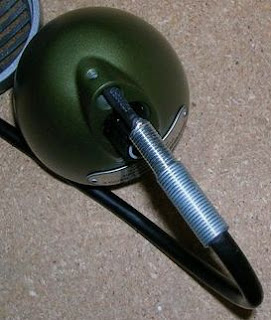To make a circuit takes several steps. First I try to simulate the circuit using the Falstad circuit simulator: http://www.falstad.com/circuit/ . After that I use a bread board to construct the circuit:
After demonstrating the circuit works I do a breadboard layout using ExpressPCB. I then photo and etch the circuit board, drill the holes and solder the components into place. I try to find a nice looking case to use for the circuit. In my search for interesting circuits I found a number of web sites. Music from Outer Space http://www.musicfromouterspace.com/ has a host of unusual noise makers. In particular the Weird Sound Generator and the Noise Cornucopia are interesting to me. I currently have parts on order for the Weird Sound Generator. The Noise Cornucopia has several interesting types of noise beyond standard white noise including filtered and grainy noise.
My biggest issue with circuits is that usually you have to supply them with at least +/- 9V which requires two 9 V batteries. That's a lot of voltage for a simple noise box so I usually attempt to rework the circuit to 9V but if I need to I can move up to +/- 9V. Since I'm not interested in doing power supplies right now, I try to stick with battery power. Op amps require both a positive and negative voltage and a ground located between them so if I put a couple of caps in series between +9 and 0 on the battery I should get a ground in between them. I usually put some high resistance resistors in series too, though I'm not sure that is necessary.
I had been searching the web for a while for chaotic oscillators and found the Lorenz system: http://ccreweb.org/documents/physics/chaos/LorenzCircuit3.html which uses the AD633. The Analog Devices chip enables you to multiply two voltages together as analog signals rather than converting to digital which is an interesting trick. The AD633 is a bit pricey ($10) and Mouser doesn't stock them though Digikey does. I found a Ring Modulator that uses this chip which should be quite cool, the WARP 633: http://m.bareille.free.fr/modular1/warp633/warp633.htm
So I was surprised to find the Rossler Attractor on the Falstad circuit simulator: Go to Circuits->Op Amps->Oscillators->Rossler Circuit.d
I built this circuit and replaced some of the resistors with potentiometers and made a video of me playing with the knobs. The output is not that interesting by itself so I added a delay and phaser to the sound:
After searching the net a bit longer I found "A simple chaotic oscillator for educational purposes" by Tamasevicius et. al. http://www.df.uba.ar/users/sgil/physics_paper_doc/papers_phys/e&m/A%20simple%20chaotic.pdf
The first thing I did was to load the circuit into the simulator. This shows some classic chaotic behavior on the scope:
The import code for the Falstad simulator is:
$ 1 5.0E-6 0.30802168489180315 50 5.0 50
a 240 224 352 224 0 15.0 -15.0 1000000.0
d 416 224 352 224 1 0.805904783
r 208 240 208 304 0 495.0
l 304 304 352 304 0 0.1 -4.0766317387341106E-4
c 304 304 256 304 0 1.0E-7 -0.08352313181090625
c 352 224 352 272 0 1.5000000000000002E-8 -0.6182734965994132
w 320 144 352 144 0
w 352 144 352 224 0
w 240 208 240 144 0
w 240 144 256 144 0
w 416 192 416 224 0
w 352 272 352 304 0
w 176 240 176 208 0
g 176 304 176 320 0
g 208 304 208 320 0
w 240 304 240 240 0
w 256 304 240 304 0
w 208 240 240 240 0
w 176 208 240 208 0
R 480 192 512 192 0 0 40.0 20.0 0.0 0.0 0.5
r 176 240 176 304 0 10000.0
r 256 144 320 144 0 10000.0
r 416 192 480 192 0 20000.0
w 352 304 416 304 0
w 416 304 416 224 0
O 352 304 352 336 1
o 25 8 0 34 5.0 9.765625E-5 0 -1
Next I built the circuit but I needed to make some changes. I wanted to use +/- 9V, 200 mH inductor, 500 ohm resistor, 9 V input, potentiometers and a few other changes. The first attempt seemed to work OK with some real chaotic regions that transitioned from tone to noise. I would like to modify this to get more range in the chaotic regions. I think need to get some different value potentiometers to implement this.
That's as far as I have so far.
Blog out,
Plasma Portal















